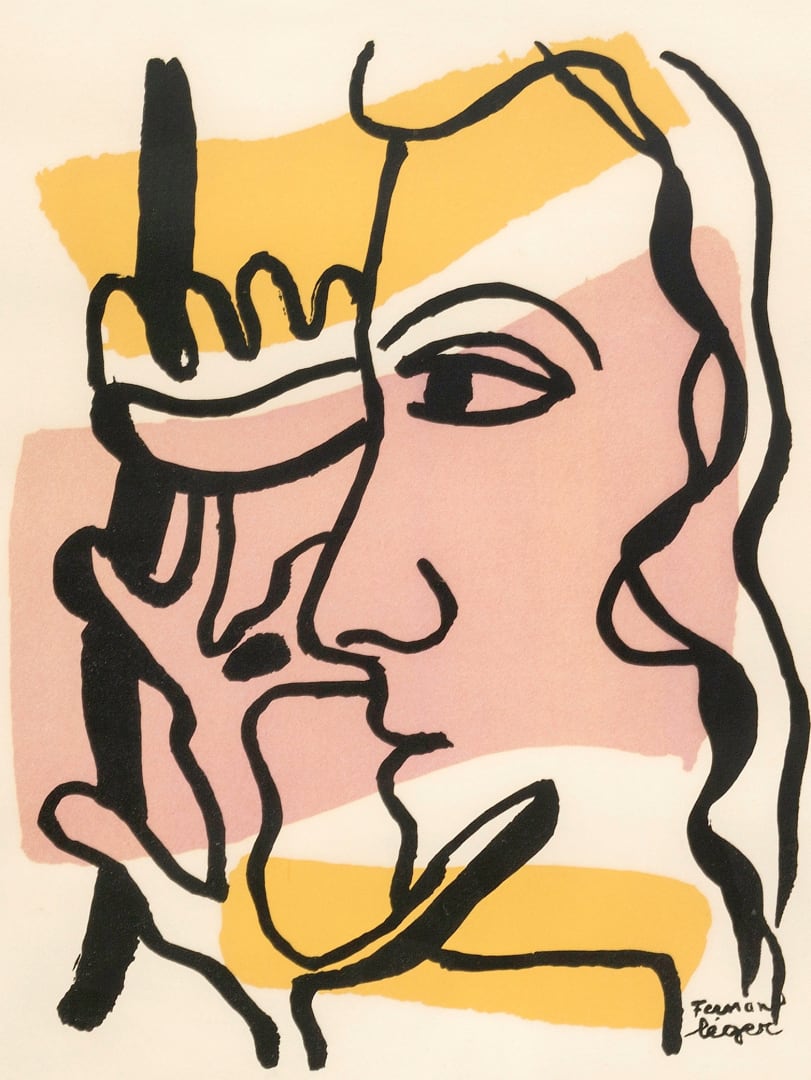Fernand Léger was born in 1881 in Normandy. He trained as an architect from 1897 to 1899 before moving to Paris to work as an architectural draftsman. He later enrolled at the School of Decorative Arts and also studied at the Académie Julian. He soon began to associate with other leaders of the avant grade and in 1910 exhibited at the Salon d'Automne, and in 1911 at the Salon des Indépendents alongside other 'Cubists': Henri Le Fauconnier, Jean Metzinger, Albert Gleizes and Robert Delauney. His first one-man exhibition was at Galerie Kahnweiler, Paris, in 1912.
Léger served in the French army during the First World War and his experience in this period had a significant effect on his work, marking the beginning of his 'mechanical period'. After the war he was active not just as a painter but in film-making, including directing the Futurist-influenced film 'Ballet Mécanique' in 1923-24. In 1935 the Museum of Modern Art, New York, and the Art Institute of Chicago presented an exhibition of his work.
During World War Two Léger lived in the United States and taught at Yale University. He returned to France in 1945 and continued to work on various wide-ranging projects including sculpture, set and costume design, mosaics and stained-glass windows.
Léger died in 1955 and is buried in Gif-sur-Yvette in France. The Musée Fernand Léger was inaugurated in 1960 in Biot, France.
